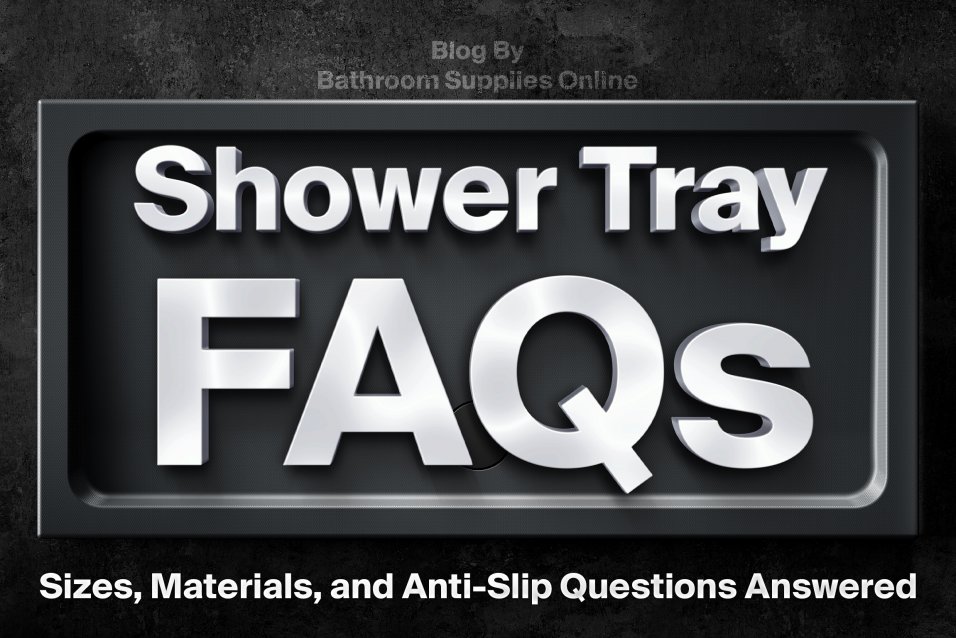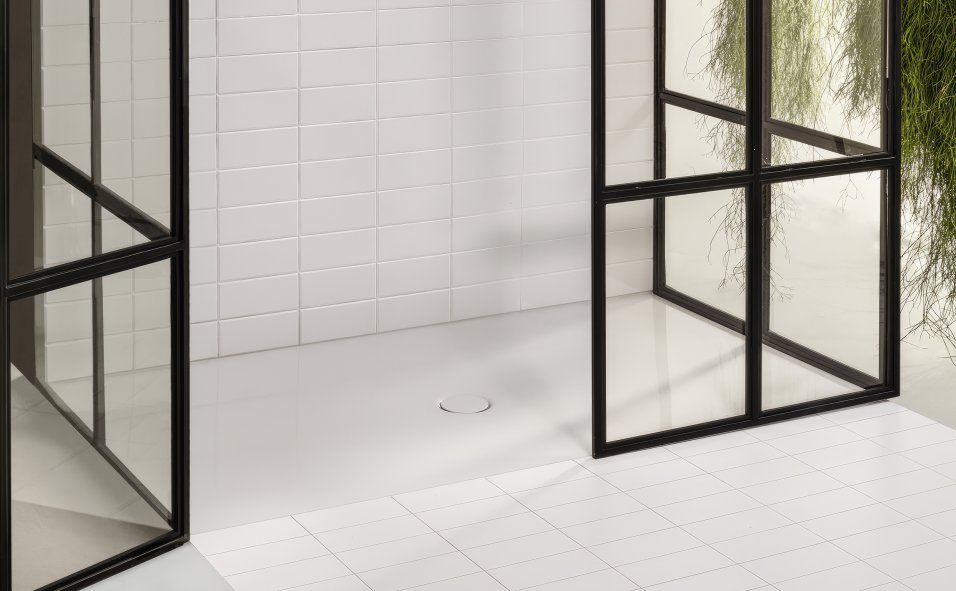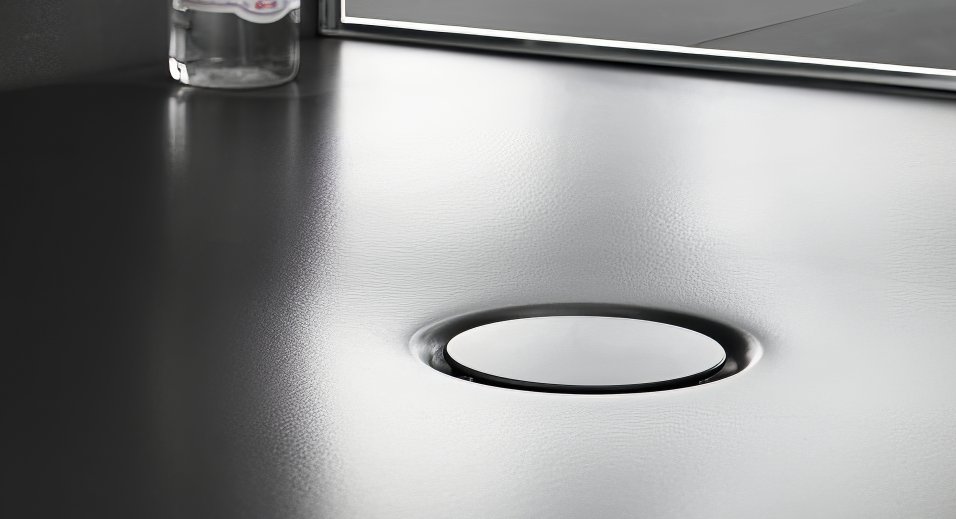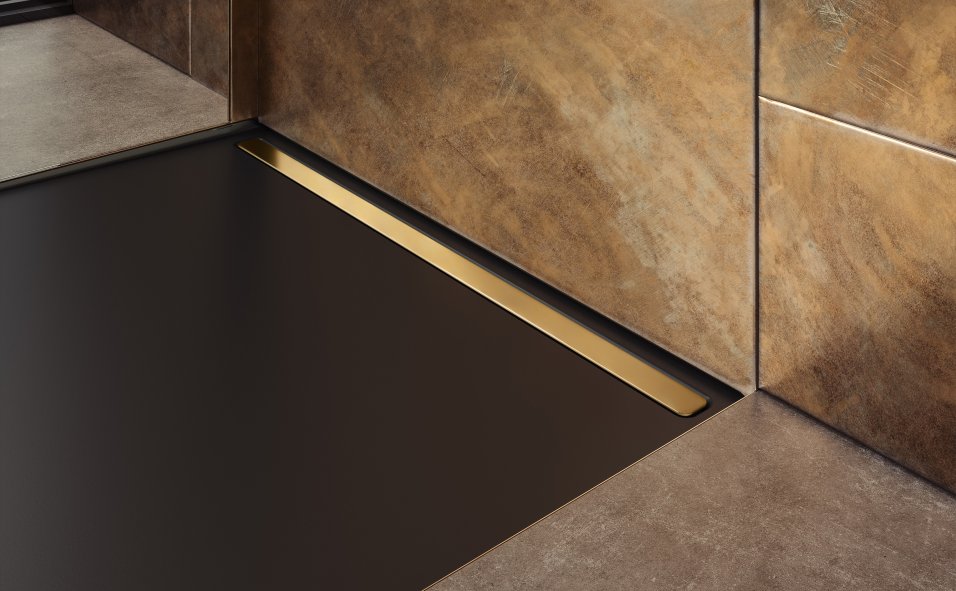| Tags | walk-in bath bath easy riser montana priya tray sizes anti-slip shower tray sizes shower tray freestanding baths geberit aquaclean aquaclean carron corner bath carron baths show all posts |
Shower Tray FAQs: Sizes, Materials, and Anti-Slip Questions Answered
If you're embarking on a bathroom renovation or simply looking to upgrade your shower space, understanding the nuances of shower trays is essential. Often overlooked, these humble components play a crucial role in both functionality and aesthetics. In this blog, we delve into the frequently asked questions surrounding shower trays, addressing everything from sizes and materials to anti-slip considerations.
Shower trays serve as the foundation of your shower enclosure, providing a stable surface for showering while effectively containing water. With a myriad of options available on the market, navigating the selection process can be daunting. Fear not, as we're here to demystify the complexities and equip you with the knowledge needed to make informed decisions.
Understanding Shower Tray Sizes
When it comes to renovating a bathroom or installing a new shower, one crucial component that demands attention is the shower tray. A quintessential element for ensuring a functional and aesthetically pleasing shower area, the choice of shower tray size not only impacts the overall design but also the comfort and usability of the space. Let's look into the frequently asked questions about shower tray sizes and give in-depth answers to help you make informed decisions for your bathroom.
What Size Shower Tray Do I Need?
Selecting the right size for your shower tray is paramount to achieving a balance between space utilisation and design harmony. The size you need largely depends on the available space in your bathroom and your personal preferences. Standard sizes range from compact 700x700mm squares, suitable for smaller bathrooms, to more expansive options like 1200x900mm rectangles, offering a spacious showering experience. When choosing a size, consider the movement area you prefer in a shower and the layout of your bathroom to ensure a seamless fit.
How Do I Measure for a Shower Tray?
Measuring for a shower tray involves a few straightforward steps:
Gather Your Tools: Before you begin, make sure you have a reliable tape measure, pencil, and paper handy. These tools will help you accurately record your measurements and any notes.
Measure the Space: Take precise measurements of the length and width of the area where you intend to install the shower tray. To ensure accuracy, measure from tile to tile rather than relying solely on rough estimations. This method helps account for any variations or irregularities in the floor or wall surfaces.
Consider Adjustments: If you're replacing an existing shower tray, it's essential to consider any adjustments that may be necessary. This includes not only accommodating a new size or shape but also ensuring that the drainage and plumbing connections align correctly. Take note of any potential obstacles or constraints, such as alcoves, protruding fixtures, or limited space, that may impact your choice of tray size.
Check Plumbing Requirements: Verify that the dimensions of your chosen shower tray align with the existing plumbing or any planned modifications. Ensure that there is adequate clearance for drainpipes, water supply lines, and any other fixtures or fittings. If you're installing a new shower tray, consult a plumber or contractor to assess and adjust the plumbing connections as needed.
Account for Obstructions and Design Elements: Take into account any obstructions or design elements in your bathroom that could affect the placement or size of the shower tray. This may include alcoves, windows, doors, or other fixtures that need to be considered when selecting the appropriate tray size and shape.
Can I Customise the Size of a Shower Tray?
Yes, customising the size of a shower tray is possible and often recommended for non-standard spaces or specific design requirements. Many manufacturers offer bespoke services, allowing you to specify dimensions that perfectly fit your bathroom layout. Customisation can cater to unique spaces, such as awkward corners or reduced areas, ensuring that every inch of your bathroom is utilised efficiently. When opting for a custom-sized tray, providing accurate measurements and clear specifications is crucial to achieving the desired outcome.
What Are the Most Popular Shower Tray Sizes?
Among the vast array of sizes, certain dimensions emerge as favourites for their versatility and compatibility with standard bathroom layouts. Popular sizes include:
800x800mm Square: This compact yet functional size is perfect for smaller bathrooms or en-suites where space is at a premium. It offers a comfortable shower area without overpowering the room.
1000x800mm Rectangle: Combining the spaciousness of a rectangle with a slightly more compact footprint, this size is ideal for bathrooms that require a balance between comfort and space-saving design.
1200x900mm Rectangle: For those seeking a larger showering area, this size provides ample space for luxurious showers while still fitting neatly into most standard bathrooms.
Offset Quadrant Trays: These trays offer a unique shape that maximises space efficiency while adding visual interest to the bathroom. Dimensions like 1200x800mm provide a generous showering area while fitting snugly into a corner.
1700x700mm Walk-In Tray: Perfect for those who prefer a spacious, open showering experience, this elongated tray size offers ample room for movement while creating a sleek, modern look in the bathroom.
Corner Entry Trays: With sizes ranging from 900x760mm to 1200x900mm, these trays are designed for corner entry enclosures, making them an excellent choice for bathrooms with limited space or unconventional layouts.
800mm Diameter Quadrant: A unique alternative to traditional square or rectangular trays, this circular design adds a touch of elegance to the bathroom while optimising space in smaller areas.
Each of these sizes and shapes caters to different bathroom configurations and design preferences, allowing homeowners to find the perfect fit for their space. Whether you prioritise functionality, style, or space-saving solutions, there's a popular shower tray size to suit your needs. Remember to consider factors such as plumbing requirements, installation logistics, and aesthetic compatibility when selecting the right tray for your bathroom.
How Does the Size of a Shower Tray Affect Bathroom Design?
The size of a shower tray significantly influences the overall design and functionality of a bathroom. Larger trays provide a luxurious, spa-like experience but require more space, potentially impacting the placement of other fixtures. Conversely, compact trays are ideal for small bathrooms, maximising space efficiency. The chosen size should harmonise with the bathroom’s layout, ensuring a balanced look and feel. It’s also worth considering how the size impacts the visual flow of the room, with larger trays making a statement and smaller trays offering subtlety.
Are There Standard Sizes for Shower Trays?
While there is a wide range of sizes available, certain dimensions are considered standard within the industry, such as:
Square Trays: Square shower trays are a versatile choice, offering a balanced layout that fits well in most bathrooms. Common dimensions for square trays include 760x760mm and 900x900mm. The 760x760mm size is compact and suitable for smaller bathrooms or en-suites, while the 900x900mm size provides a more spacious showering area without overwhelming the space.
Rectangular Trays: Rectangular shower trays are favoured for their efficient use of space and contemporary appeal. Popular dimensions for rectangular trays include 1200x760mm and 1400x900mm. The 1200x760mm size strikes a balance between space-saving design and generous showering area, making it suitable for most standard bathrooms. Meanwhile, the 1400x900mm size offers a larger footprint, perfect for those who prefer a more expansive showering experience.
Quadrant Trays: Quadrant shower trays are designed to fit snugly into corner installations, making them an excellent space-saving solution. Standard dimensions for quadrant trays typically include 800x800mm or 900x900mm. The 800x800mm size is compact and ideal for smaller bathrooms or en-suites, while the 900x900mm size provides a more spacious showering area with a stylish curved design.
These standard sizes are carefully crafted to accommodate various space configurations while ensuring optimal functionality and aesthetic appeal. By adhering to these industry-standard dimensions, homeowners can streamline the selection process and confidently choose the right shower tray size for their bathroom. However, it's essential to consider individual preferences, spatial constraints, and design requirements when making the final decision.
How Do I Choose Between a Square, Rectangular, or Quadrant Shower Tray?
Choosing between square, rectangular, or quadrant shower trays depends on your bathroom’s layout and your personal preferences. Square trays are versatile, fitting well in most spaces. Rectangular trays offer more room and suit elongated spaces, making them ideal for larger bathrooms. Quadrant trays are perfect for corner installations, saving space while providing a contemporary look. Consider the overall design theme of your bathroom, the available space, and how the shape of the tray will complement other elements in the room.
What are the most popular materials used for shower trays?
Acrylic: Acrylic stands out for its versatility and practicality in the bathroom environment. Its lightweight nature not only simplifies the installation process but also reduces the strain on existing bathroom structures. This material is particularly appealing for its ease of maintenance—its non-porous surface prevents the buildup of bacteria and mould, ensuring a hygienic space. Furthermore, acrylic retains heat well, offering a more pleasant touch compared to colder materials and enhancing the comfort of your shower experience. The material's inherent flexibility allows for a variety of shapes and sizes, making acrylic shower trays adaptable to both spacious and compact bathrooms.
Stone Resin: Stone resin shower trays exude an air of luxury and resilience. The combination of crushed natural stone and a resin binder results in a tray that is exceptionally strong and durable, capable of enduring the wear and tear of everyday use without compromising on aesthetics. The weight of stone resin trays adds to their stability, reducing the risk of movement once installed. This material offers a high-end, minimalist look that can serve as a focal point in bathroom design. Despite their robust nature, stone resin trays are available in an array of finishes, allowing for personalisation in the bathroom's overall design theme.
Ceramic: Ceramic is favoured for its enduring beauty and functionality. As a material that is resistant to scratches and chips, ceramic maintains its pristine appearance over time, contributing to the bathroom's enduring appeal. Its glazed surface not only adds to its aesthetic value but also facilitates cleaning, making it a practical option for busy households. Ceramic shower trays can be seamlessly integrated into various bathroom decors, from the elegance of classic designs to the clean lines of modern aesthetics. The material's solidity and cool touch provide a sense of quality and timelessness.
Composite Materials: Composite shower trays represent the cutting edge in bathroom design innovation. By blending materials such as acrylic with mineral compounds, these trays achieve a balance between lightness and strength not found in traditional materials. This innovative composition allows for the creation of shower trays that are not only durable but also flexible in terms of design and finish. Composite trays can emulate the look and feel of natural materials like stone or wood, offering bespoke solutions for those seeking a customised bathroom. Their versatility makes them suitable for a wide range of bathroom styles, from rustic to ultra-modern.
Solid Surface Materials: Solid surface materials, including well-known brands like Corian, are at the forefront of customisable bathroom design. These materials are celebrated for their ability to create a unified, seamless appearance in the bathroom. Being non-porous, solid surface materials resist stains and are straightforward to clean, contributing to a hygienic bathroom environment. Their adaptability allows for tailor-made designs, fitting any bathroom layout or size with precision. Solid-surface shower trays can be crafted to any dimension or shape, offering unparalleled flexibility in bathroom design. This material choice is ideal for those looking to achieve a bespoke, high-end bathroom aesthetic without compromising on functionality or hygiene.
How do I choose the right material for my shower tray?
The choice of material depends on several factors, including budget, bathroom style, and personal preference for maintenance and feel. Acrylic and composite materials are suitable for those seeking lightweight and cost-effective options. Stone resin and ceramic offer durability and a premium feel, ideal for high-end bathroom designs. For a customised, minimalist look, solid surface materials are the best choice.
What are the benefits of anti-slip shower trays?
Safety is paramount in any bathroom, and anti-slip shower trays are designed to minimise the risk of slips and falls. These trays have a textured surface or are treated with an anti-slip coating to provide extra grip underfoot. This feature is especially beneficial for families with young children, elderly members, or anyone with mobility issues.
How does the anti-slip feature work on shower trays?
Anti-slip technology can vary between manufacturers but generally involves creating a textured surface on the shower tray or applying a coating that increases friction. Some trays have a patterned surface that provides physical grip, while others use a special material integrated into the tray's surface. These treatments ensure stability even when the surface is wet.
Can I add an anti-slip feature to an existing shower tray?
Yes, if your current shower tray doesn't have anti-slip properties, there are aftermarket solutions available. Anti-slip coatings can be applied directly to the surface of the tray. These are usually clear and do not significantly alter the appearance of the tray. Anti-slip mats or stickers are another option, though they may require more frequent cleaning to maintain hygiene.
Are there any maintenance tips for anti-slip shower trays?
Maintenance for anti-slip shower trays is straightforward but essential for preserving their effectiveness and appearance. Regular cleaning with a non-abrasive cleaner is recommended to prevent the buildup of soap scum and limescale, which can reduce the anti-slip properties. Avoid using harsh chemicals or scouring pads, as these can damage the surface of the tray.
How do material and anti-slip features affect the price of shower trays?
The material and inclusion of anti-slip features can significantly influence the price of shower trays. Stone resin and solid surface materials, known for their durability and high-end appearance, are generally more expensive. Anti-slip technology, whether it's a textured surface or a special coating, can also add to the cost. However, investing in these features can enhance the safety and longevity of your shower tray, making it a wise investment in the long run.
Choosing the right material and anti-slip features for your shower tray can significantly impact the functionality, safety, and style of your bathroom. By considering your specific needs and preferences, you can select a shower tray that not only looks great but also offers peace of mind with its safe and durable design. Whether you opt for the lightweight ease of acrylic, the robustness of stone resin, or the customisability of solid surface materials, ensure the inclusion of anti-slip features to maintain a secure bathroom environment for all users.

 5 Star Rated 1858 reviews
5 Star Rated 1858 reviews




